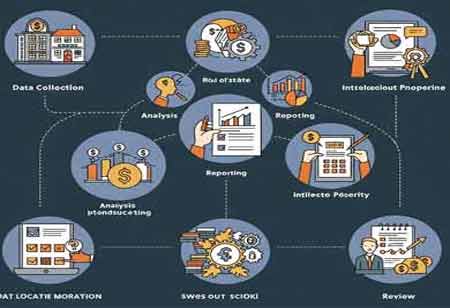CLOSE
Specials
- RegTech Europe
- Financial Risk Management APAC
- Investment Banking APAC
- Corporate Advisory APAC
- Regtech APAC
- Escrow Services
- Digital Banking Latam
- Trading Solutions APAC
- Treasury Management Europe
- CPA Firms Canada
- Financial Risk Management Europe
- Mortgage Broker
- Financial Licensing Europe
- RIA Advisory Europe
- FinTech Canada
- Financial Asset Management APAC
- Investment Banking Canada
- Payment Solution
- Lending Mangment Latam
- Payment Solution Europe
- Broker Dealer Firms Canada
- Alternative Investments Canada
- Financial Fraud
- Investment Management Latam
- Financial Health Europe
- Lending mangment
- Financial Marketing
- Proprietary Trading Europe
- Wealth Management
- FinTech
- Financial Brokerage Firm APAC
- Investment Advisory Europe
- Investment Advisory APAC
- Wealth Management MENA
- Claim Adjusting
- Claim Adjusting APAC
- Mergers and Acquisitions Consulting APAC
- Equipment Financing
- CPA Firms
- Mergers and Acquisitions Consulting Canada
- Investment Services
- Valuation Services Canada
- Wealth Management APAC
- Broker Dealer Firms
- Debt Collection Agencies
- Mergers and Acquisitions Consulting
- FinTech Europe
- Fintech Latam
- Financial Planning / Retirement
- Investment Management
- Financial Compliance
- Digital Banking Europe
- CFO Services
- Debt Collection Agencies Europe
- Wealth Management Europe
- Mergers and Acquisitions Consulting Europe
- Financial Restructuring Europe
- Financial Portfolio Management Canada
- Business Loan
- Payment and Card Latam
- Wealth Management Latam
- Mergers and Acquisitions Consulting Latam
- Tax Advisory Canada
- Trading Solutions Europe
- Alternative Investments
- Digital Insurance Europe
- Investment Services Latam
Weekly Brief
×Be first to read the latest tech news, Industry Leader's Insights, and CIO interviews of medium and large enterprises exclusively from Financial Services Review
Thank you for Subscribing to Financial Services Review Weekly Brief
The Innovation and Efficiency of Payment and Collection Methods in Treasury Operations
The European treasury landscape is undergoing substantial transformation, driven by heightened complexities in cross-border operations, evolving customer expectations, and advancements in technology.

By
Financial Services Review | Wednesday, January 24, 2024
Stay ahead of the industry with exclusive feature stories on the top companies, expert insights and the latest news delivered straight to your inbox. Subscribe today.
The European treasury is undergoing significant transformation due to cross-border operations, customer expectations, and technological advancements, necessitating advanced payment methodologies, real-time schemes, open banking regulations, and collaboration with fintech entities.
FREMONT, CA: The European treasury landscape is undergoing substantial transformation, driven by heightened complexities in cross-border operations, evolving customer expectations, and advancements in technology. In response to these dynamics, treasurers are required to embrace state-of-the-art methodologies for payment and collection. This strategic approach aims to optimise cash flow, curtail expenses, and enhance overall operational efficiency. Effectively navigating this market necessitates the implementation of innovative techniques in treasury management.
The Rise of Real-Time Payments
The advent of real-time payment (RTP) schemes represents a significant transformative shift in the landscape of European financial transactions. These technologies effectively eradicate the inherent delays and uncertainties associated with traditional payment methods, facilitating immediate financial settlement between participating entities. Notably, the Single Euro Payments Area (SEPA) Instant Credit Transfer (SCT Inst) scheme has successfully processed transactions valued in billions of euros. Its widespread adoption across Europe is demonstrating rapid growth, underscoring its pivotal role in reshaping the regional payments ecosystem.
Optimising cash flow management is paramount, facilitated by expedited settlement times that empower treasurers to strategically enhance working capital and curtail financing expenses. Concurrently, the timely disbursement of payments fosters stronger supplier relationships, elevating satisfaction levels and creating opportunities to negotiate more favourable trading terms. Additionally, the streamlining of payment processes translates into noteworthy operational cost reductions, contributing to overall financial efficiency.
The Power of Open Banking
Open banking regulations, exemplified by PSD2 in Europe, are fostering a paradigm shift by allowing the disclosure of financial data to third-party providers, subject to customer consent. This development holds significant implications for treasurers, affording them unprecedented access to a diverse array of data and services poised to revolutionise their operational landscape. One notable application involves the initiation of payments directly from Enterprise Resource Planning (ERP) systems, effectively eliminating the reliance on manual data entry and mitigating the risk of errors. Furthermore, by aggregating data from multiple bank accounts, treasurers gain real-time insights into their cash flow, empowering them to make more informed financial decisions. The transformative potential extends to the realm of product and service innovation, as open banking APIs facilitate the creation of tailor-made solutions addressing the unique needs of clients. This intersection of regulatory evolution and technological innovation provides treasurers with a platform to enhance efficiency, accuracy, and responsiveness in their financial operations.
The Evolving Role of Fintech
Fintech entities are assuming a progressively vital role within the European treasury landscape by introducing innovative solutions that effectively tackle the challenges confronted by traditional banks, including exorbitant fees, limited product offerings, and protracted processing durations. Within the treasury domain, fintech disruption is notably evident in key areas such as trade finance, where platforms are providing expeditious and cost-effective solutions, particularly beneficial for small and medium-sized enterprises (SMEs). Additionally, fintech companies are actively involved in the development of cross-border payment solutions that enhance speed, affordability, and transparency in transactions. Moreover, the integration of automation tools utilising AI is empowering treasurers to streamline manual reconciliation processes, resulting in significant time and cost savings. This landscape underscores the transformative impact of fintech on traditional treasury practices, ushering in an era of efficiency and innovation.
The Potential of Central Bank Digital Currencies (CBDCs)
Central banks worldwide, including the European Central Bank (ECB), are actively investigating the feasibility of introducing CBDCs. These digital representations of a nation's fiat currency would be both issued and supported by the central bank. While still in the nascent stages of development, CBDCs hold the potential to transform the payment landscape by providing expedited and cost-effective transactions. With the capability for near-instant settlements at a fraction of the expense associated with conventional payment methods, CBDCs could usher in a new era of efficiency. Furthermore, the inherent backing of the central bank would confer a high level of security on CBDCs, rendering them highly resistant to fraudulent activities. Additionally, CBDCs have the potential to advance financial inclusion by extending access to financial services for individuals currently excluded from traditional banking systems. This ongoing exploration into CBDCs reflects a significant paradigm shift in the financial sector, with implications for the global economy.
Cybersecurity risks associated with the adoption of new technologies must be kept in mind by treasurers as they navigate the evolving landscape of treasury management. It is imperative to invest in comprehensive cybersecurity measures to safeguard sensitive financial data effectively. Simultaneously, treasurers must stay abreast of the dynamic regulatory environment governing payments and financial technology, recognising the importance of continual compliance. Furthermore, fostering collaboration among banks, fintech entities, and regulators is crucial for the seamless integration of innovative technologies within the European treasury landscape, ensuring a harmonised and successful implementation.
The European treasury landscape is undergoing a transformative phase, presenting a pivotal moment for financial professionals. By leveraging fintech solutions, embracing open banking, incorporating real-time payment systems, and exploring CBDCs, treasurers can elevate operational efficiency, gain a competitive edge, and optimise their workflow.

Copyright © 2025 Financial Services Review. All rights reserved





